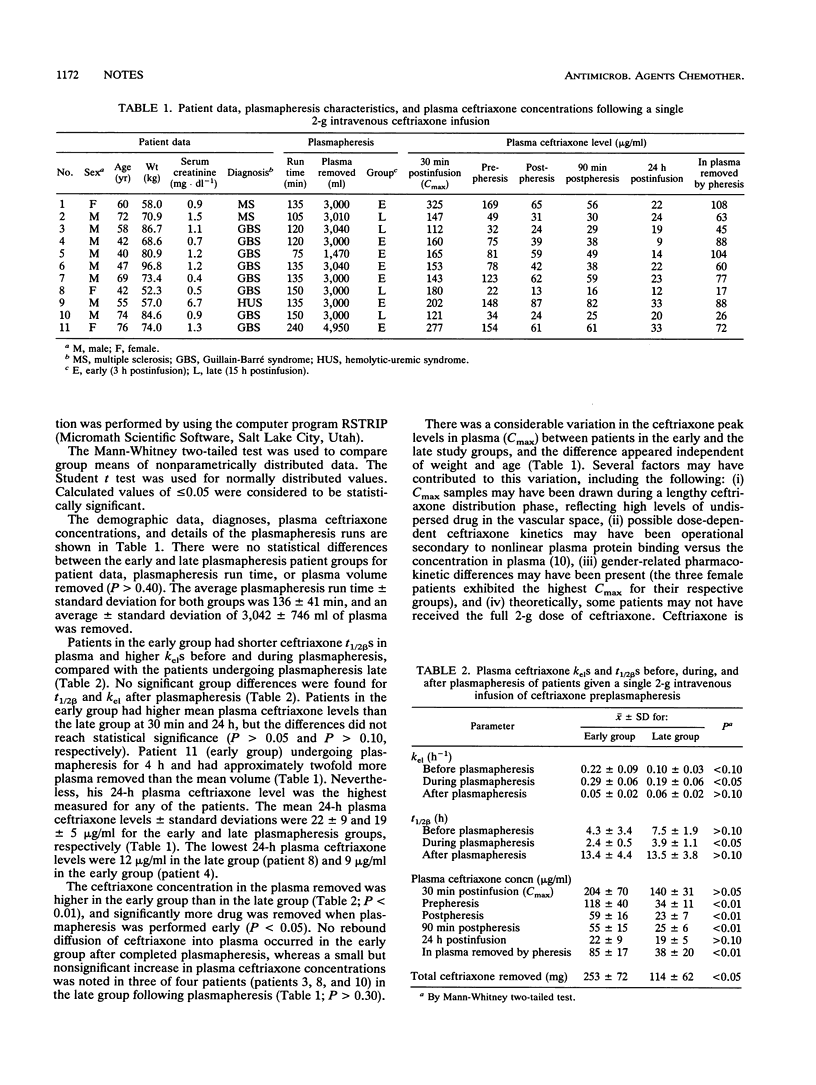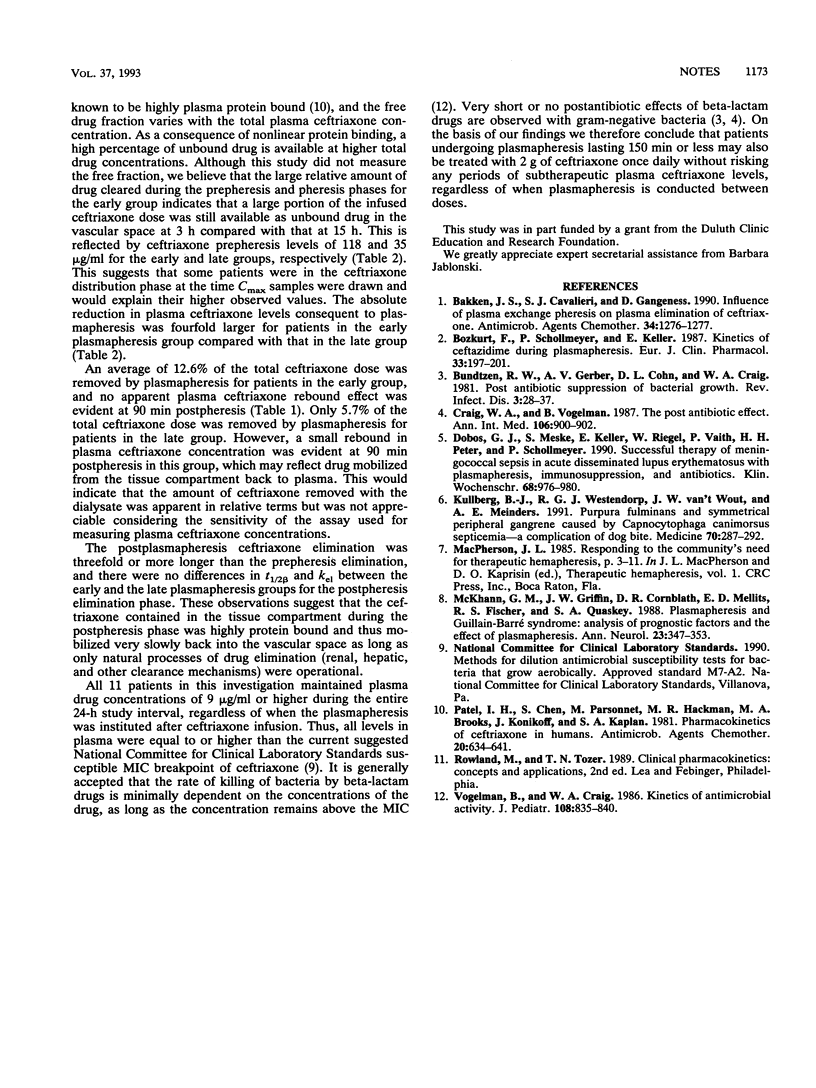Abstract
To study the plasma elimination rate of ceftriaxone given to patients undergoing plasmapheresis, a single 2-g intravenous dose of ceftriaxone was given to 11 patients who underwent plasmapheresis 3 h (early group) or 15 h (late group) later. Even though the early patient group had twofold more ceftriaxone removed than the late group, all individual patients had 24-h ceftriaxone levels of 9 micrograms/ml or higher. We conclude that patients undergoing plasmapheresis lasting 150 min or less may safely be treated with 2 g of ceftriaxone once daily without risking periods of subtherapeutic plasma ceftriaxone levels.
Full text
PDF


Selected References
These references are in PubMed. This may not be the complete list of references from this article.
- Bakken J. S., Cavalieri S. J., Gangeness D. Influence of plasma exchange pheresis on plasma elimination of ceftriaxone. Antimicrob Agents Chemother. 1990 Jun;34(6):1276–1277. doi: 10.1128/aac.34.6.1276. [DOI] [PMC free article] [PubMed] [Google Scholar]
- Bozkurt F., Schollmeyer P., Keller E. Kinetics of ceftazidime during plasmapheresis. Eur J Clin Pharmacol. 1987;33(2):197–201. doi: 10.1007/BF00544567. [DOI] [PubMed] [Google Scholar]
- Bundtzen R. W., Gerber A. U., Cohn D. L., Craig W. A. Postantibiotic suppression of bacterial growth. Rev Infect Dis. 1981 Jan-Feb;3(1):28–37. doi: 10.1093/clinids/3.1.28. [DOI] [PubMed] [Google Scholar]
- Craig W. A., Vogelman B. The postantibiotic effect. Ann Intern Med. 1987 Jun;106(6):900–902. doi: 10.7326/0003-4819-106-6-900. [DOI] [PubMed] [Google Scholar]
- Dobos G. J., Meske S., Keller E., Riegel W., Vaith P., Peter H. H., Schollmeyer P. Successful therapy of meningococcal sepsis in acute disseminated lupus erythematosus with plasmapheresis, immunosuppression, and antibiotics. Klin Wochenschr. 1990 Oct 3;68(19):976–980. doi: 10.1007/BF01646657. [DOI] [PubMed] [Google Scholar]
- Kullberg B. J., Westendorp R. G., van 't Wout J. W., Meinders A. E. Purpura fulminans and symmetrical peripheral gangrene caused by Capnocytophaga canimorsus (formerly DF-2) septicemia--a complication of dog bite. Medicine (Baltimore) 1991 Sep;70(5):287–292. doi: 10.1097/00005792-199109000-00001. [DOI] [PubMed] [Google Scholar]
- McKhann G. M., Griffin J. W., Cornblath D. R., Mellits E. D., Fisher R. S., Quaskey S. A. Plasmapheresis and Guillain-Barré syndrome: analysis of prognostic factors and the effect of plasmapheresis. Ann Neurol. 1988 Apr;23(4):347–353. doi: 10.1002/ana.410230406. [DOI] [PubMed] [Google Scholar]
- Patel I. H., Chen S., Parsonnet M., Hackman M. R., Brooks M. A., Konikoff J., Kaplan S. A. Pharmacokinetics of ceftriaxone in humans. Antimicrob Agents Chemother. 1981 Nov;20(5):634–641. doi: 10.1128/aac.20.5.634. [DOI] [PMC free article] [PubMed] [Google Scholar]
- Vogelman B., Craig W. A. Kinetics of antimicrobial activity. J Pediatr. 1986 May;108(5 Pt 2):835–840. doi: 10.1016/s0022-3476(86)80754-5. [DOI] [PubMed] [Google Scholar]


